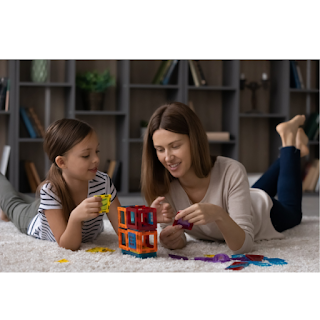Learning good manners is important for every child, but it can be especially difficult with autism. There are some specific behaviors that you should teach your child with autism--they'll help them build good relationships and feel successful in the world. Check out this list of essential manners to teach any child, including those with autism!
What are manners?
Manners are considered a set of social skills that people use to show consideration for other people. They demonstrate respect, politeness, and understanding of social expectations. Teaching your child with autism manners is an integral part of their development due to the many challenges in society. Social challenges can make it hard for them to engage in conversations or make connections. Common difficulties include not using eye contact, not responding when called by name, not initiating interactions with others, and not accepting or declining food offers. Common manners can help your child connect in social situations.
How to teach your child with autism about manners
It is essential to teach your child with autism about manners. This will make it easier to develop a good relationship with their peers and adults, as they will be able to form genuine friendships.
You may want to teach your child the etiquette of good behavior and manners while they are young to practice these skills as they grow older. Showing your child how to be respectful and polite to others is a great way to teach them social skills. You must show your child how to behave around others, especially adults. Teaching manners to a child with autism can be difficult. You might have to make your own system and guide them as they learn new skills. They will eventually have their own understanding of what "polite" looks like, but there are some things you can do to encourage politeness:
- Saying please and thank you
- Helping others
- Eating politely (using a spoon to scoop up food, not digging in with fingers)
- Not interrupting
- Sharing (even when they want it all for themselves)
Different ways to teach your child manners
It can be challenging to teach your child how to behave in public because they may not be able to read social cues. Here are some ways you can help your child learn manners:
- Model the polite behavior you expect your child to exhibit. This will help them learn and understand what is expected of them.
- Make sure they're clear on appropriate behavior by always giving clear, concise instructions two or three times in a row.
- Provide good examples that they might imitate, like telling them about when their behavior was acceptable or unacceptable. Sometimes children will imitate you, and they must copy the right things.
- Be consistent when giving consequences. If your child knows what is acceptable behavior and what's not, they'll be more likely to behave appropriately.
- Provide positive reinforcement when your child is behaving appropriately.
Conclusion
Learning the social skills of a child with autism requires more than just understanding their developmental needs. Parents need to know how to break down social interactions and teach appropriate responses at each stage so that the child can learn how to effectively communicate, become more confident and self-reliant, and function in public. One of these social skills is manners, which they can learn through modeled behavior.
I hope you found this blog informative and the information helpful. If you are interested in learning more about Applied Behavior Analysis and the services Behavior Matters, LLC provides, please email info@behaviormattersllc.com.




